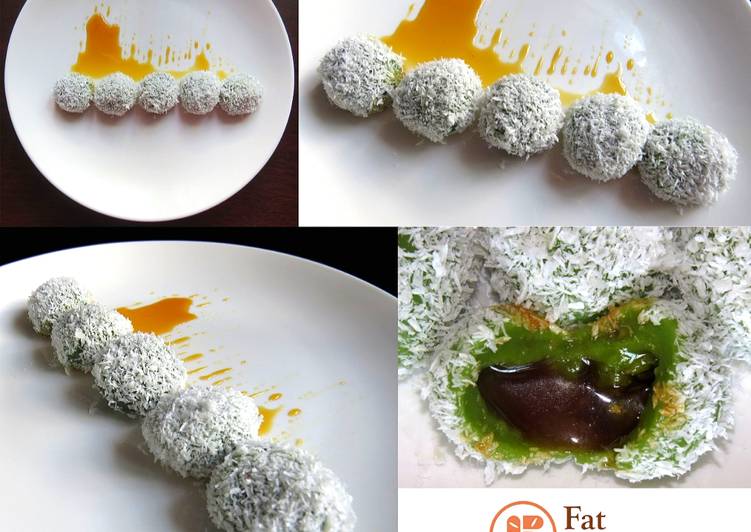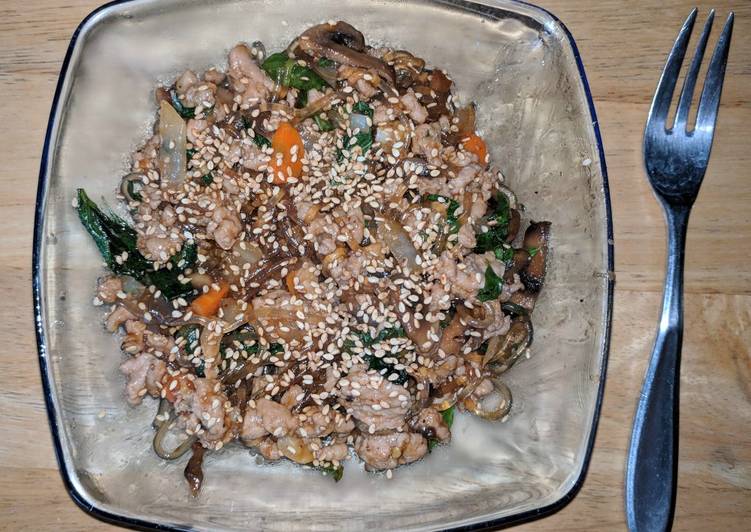
Hey everyone, it is Jim, welcome to our recipe page. Today, I will show you a way to prepare a distinctive dish, pork rib sinigang. It is one of my favorites food recipes. For mine, I’m gonna make it a little bit unique. This will be really delicious.
Sinigang, a filling Filipino soup, gets its signature tang from tamarind, mingled with spareribs, taro, green beans, and vegetables galore. How to cook Pork Ribs Sinigang. The latter is the most popular way and is supposedly the best way to extract the flavor of the meat and bones. Pork sinigang is my absolute favorite filipino dish.
Pork rib sinigang is one of the most popular of recent trending meals in the world. It’s appreciated by millions daily. It’s simple, it is quick, it tastes yummy. They’re nice and they look fantastic. Pork rib sinigang is something which I have loved my entire life.
To get started with this particular recipe, we have to prepare a few ingredients. You can cook pork rib sinigang using 13 ingredients and 4 steps. Here is how you cook it.
The ingredients needed to make Pork rib sinigang:
- Make ready 1 large onion, thinly sliced
- Prepare 1 full rack pork back ribs, trimmed and cut into 2 rib segments
- Prepare 6 cloves garlic, roughly chopped
- Get 6 cups vegetable stock
- Get 4 large bay leaves
- Prepare 1/2 cup tamarind concentrate
- Make ready 3 tbsp fish sauce
- Make ready 3 Roma tomatoes, chopped
- Make ready 1 jalapeno, halved
- Make ready 1 large eggplant, chopped into 2 cm chunks
- Prepare 1 large handful green beans, trimmed
- Get 8 pcs baby bok choy
- Get 2 cups baby spinach
It is often associated with dishes in sour soup and different kinds of proteins or shrimps. The more traditional approach of cooking this dish is deriving their sourness from native ingredients such as tamarind or santol. Great recipe for Pork Rib Sinigang. Sinigang is a traditional Filipino dish whose ingredients are normally substituted depending on the preference of each household; or which region of the Philippines you are in.
Steps to make Pork rib sinigang:
- Add a splash of veg oil to a wide, high-sided pan on medium-high heat. Add the onions and fry for 2 to 3 minutes until softened. Season the ribs with salt and pepper and add them to the pan. Sear about 2 minutes, then flip and sear about 2 minutes more. At the flip, add the garlic. As the ribs brown, move the onions and garlic around a bit so they don't burn.
- Add enough stock to the pan to cover the ribs. If more liquid is needed, just top up with water. Add the bay leaves, tamarind concentrate, and fish sauce. Bring to a simmer, then turn the heat down to medium-low. After 15 minutes, skim any foam from the surface.
- Add the tomatoes and jalapeno to the pan. Cover, and let simmer for 1 1/2 hrs until the meat is tender. Add water as needed to keep the ribs submerged.
- Remove the bay leaves and jalapeno. Add the eggplant and turn the heat back up to medium-high. Continue simmering uncovered for 5 minutes. Add the beans and bok choy and simmer another 5 minutes. Check the seasoning and add salt and freshly cracked black pepper to taste. Take the pan off the heat and add the spinach. Give the spinach a minute to wilt, then serve the soup hot with steamed rice.
Great recipe for Pork Rib Sinigang. Sinigang is a traditional Filipino dish whose ingredients are normally substituted depending on the preference of each household; or which region of the Philippines you are in. The quality of this dish depends on the souring agent. Originally, the most common and widely used souring agent for this dish is unripe tamarind fruit or sampaloc in tagalog. I prefer to use either pork belly or buto-buto when cooking sinigang.
So that’s going to wrap it up with this exceptional food pork rib sinigang recipe. Thanks so much for reading. I am sure that you will make this at home. There’s gonna be interesting food at home recipes coming up. Remember to save this page on your browser, and share it to your family, friends and colleague. Thank you for reading. Go on get cooking!


